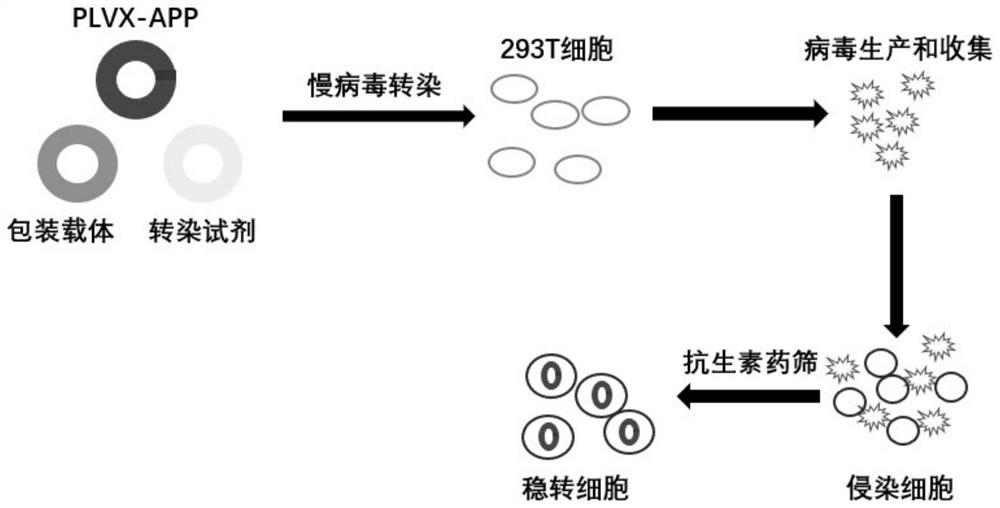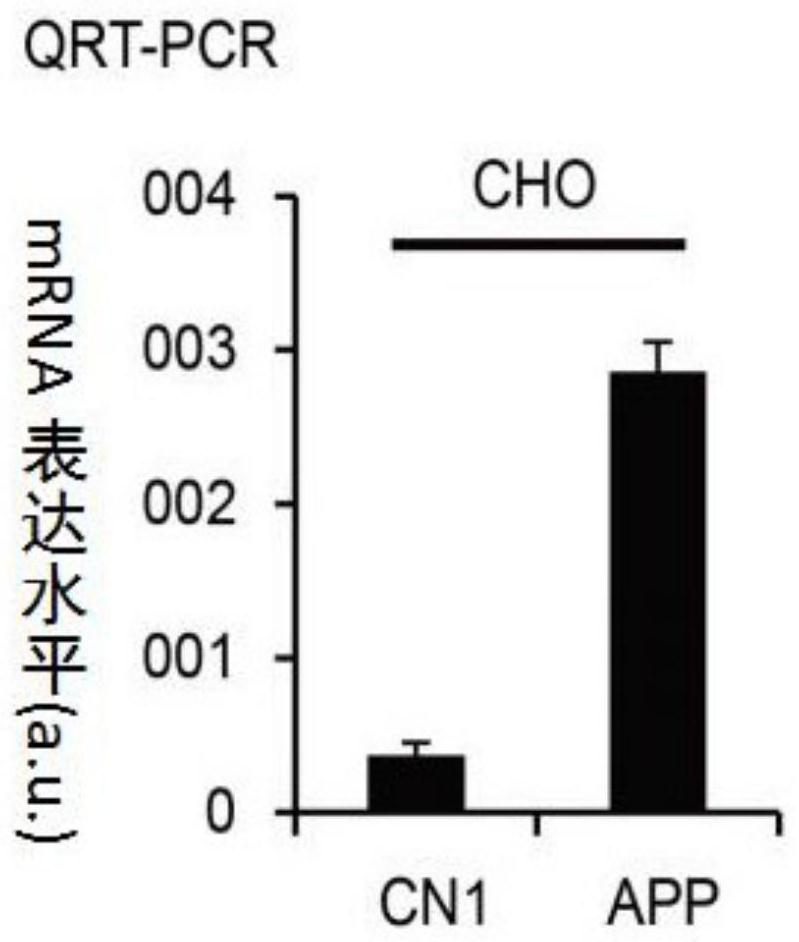Method for constructing Alzheimer's disease (AD) cell model, and application of Alzheimer's disease (AD) cell model
An Alzheimer's disease, cell model technology, applied in the field of biotechnology and genetic engineering, can solve the problem that the degree of amyloid plaques and neurofibrillary tangles cannot be standardized, and AD cell models have uneven secretion of Aβ and Tau phosphorylation ability , not for a long time, etc., to achieve stable and continuous tau protein phosphorylation, stable and continuous Aβ deposition, and simple and fast technology.
- Summary
- Abstract
- Description
- Claims
- Application Information
AI Technical Summary
Problems solved by technology
Method used
Image
Examples
Embodiment 1
[0063] This example provides a method for constructing an Alzheimer's disease cell model (ADcell model) that can be used for a long time and has stable properties. The main technical process can be divided into four steps: 1. Vector construction; 2. Cell construction; 3. Matrigel culture; 4. Congo red amyloid staining and Western blotting to detect the pathological features of AD.
[0064] Each step is described in detail below:
[0065] 1. Vector construction (using molecular biology techniques to construct PLVX-APP recombinant vector)
[0066] (1) Selection of suitable carrier skeleton. The present invention selects the lentiviral vector pLVX-IRES-Puro (hereinafter referred to as PLVX) as the basic skeleton of the recombinant vector.
[0067] (2) National Center of Biotechnology Information (NCBI) website ( https: / / www.ncbi.nlm.nih.gov / ) search for the coding sequence (codingsequence, CDS) of the APP gene.
[0068] (3) Use the Primer5 primer design software to design p...
PUM
 Login to View More
Login to View More Abstract
Description
Claims
Application Information
 Login to View More
Login to View More - R&D
- Intellectual Property
- Life Sciences
- Materials
- Tech Scout
- Unparalleled Data Quality
- Higher Quality Content
- 60% Fewer Hallucinations
Browse by: Latest US Patents, China's latest patents, Technical Efficacy Thesaurus, Application Domain, Technology Topic, Popular Technical Reports.
© 2025 PatSnap. All rights reserved.Legal|Privacy policy|Modern Slavery Act Transparency Statement|Sitemap|About US| Contact US: help@patsnap.com



